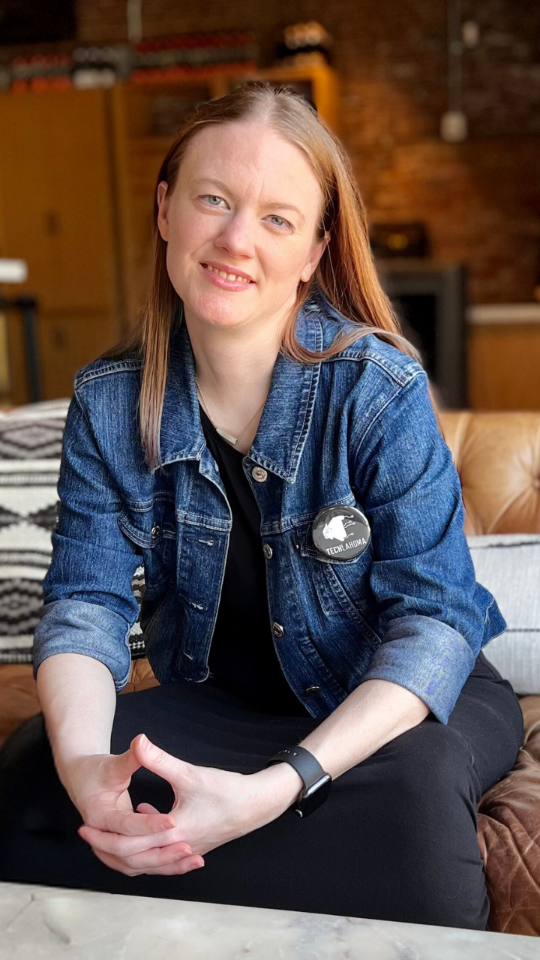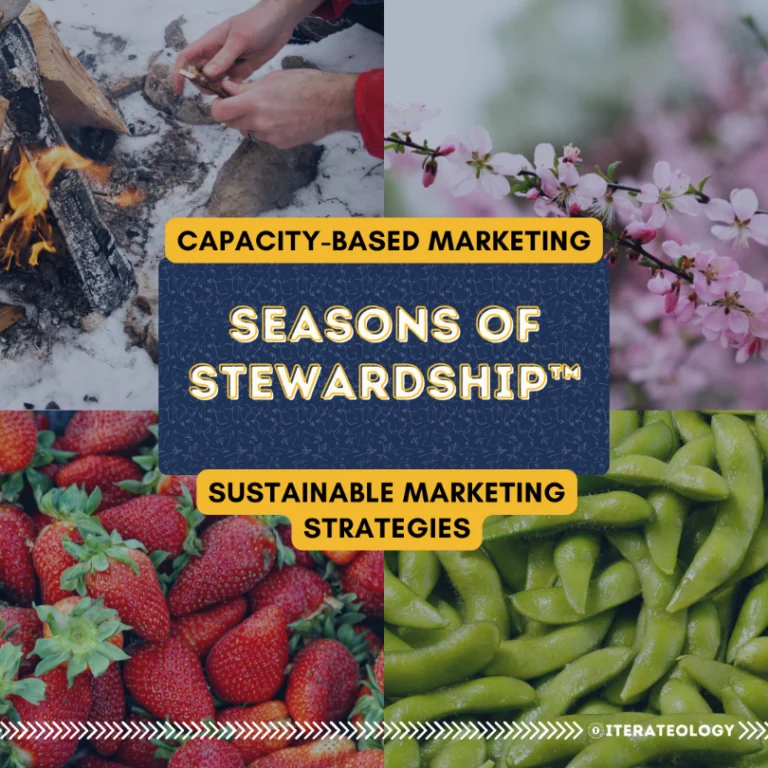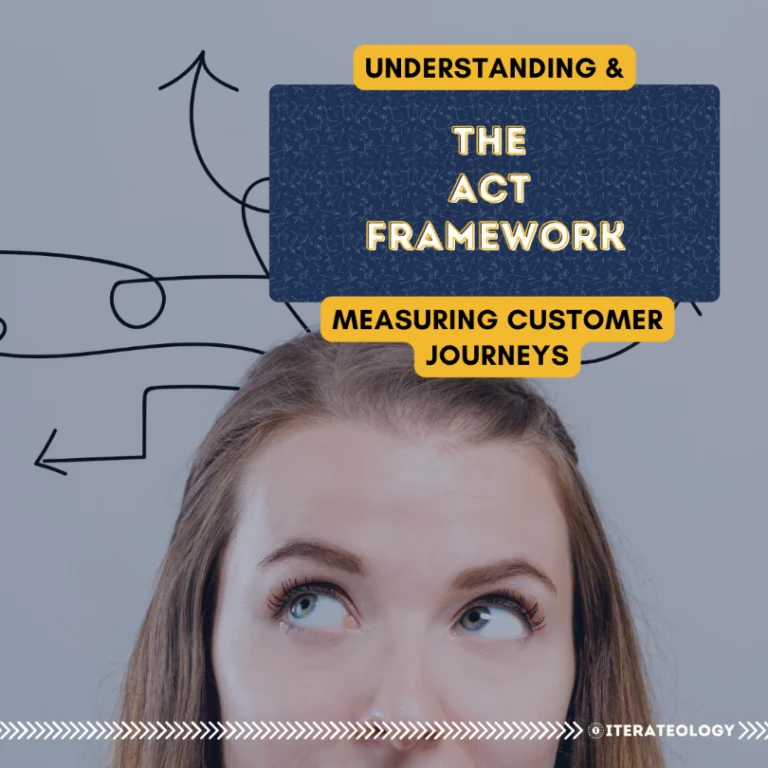Marketing Ecosystem vs. Funnels: A Smarter Marketing Strategy for Coaches
Looking for a more effective marketing strategy for your coaching business?
Traditional marketing funnels follow a linear path from awareness to purchase—but real client journeys are rarely that simple. If you’ve ever felt like your leads are slipping through the cracks, it’s not you—it’s the funnel.
A marketing ecosystem offers a smarter, more sustainable alternative. Instead of relying on rigid sequences, it tracks how potential clients actually move through your brand: across multiple platforms, through repeat touchpoints, and at their own pace.
By shifting from a one-size-fits-all funnel to a dynamic ecosystem, coaching CEOs can build stronger relationships, make more informed decisions, and confidently optimize what’s working.
Let’s explore why marketing funnels are no longer enough—and why an ecosystem is the better strategy for long-term growth.
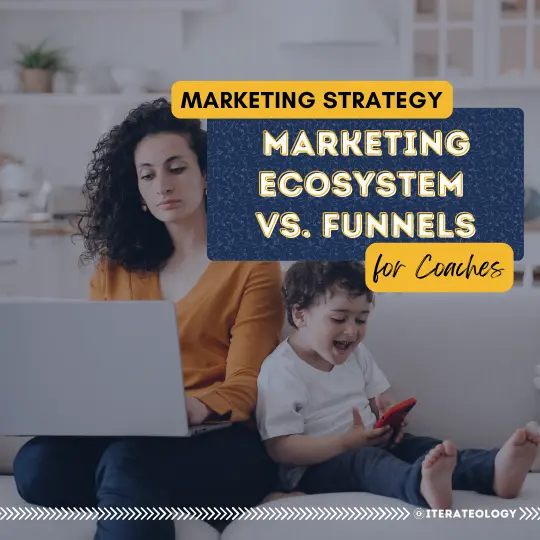
Funnels vs. Marketing Ecosystems: Why Coaching CEOs Need a Better Marketing Model
For years, marketing has been taught through the lens of funnels – linear, step-by-step paths that guide potential clients from awareness to conversion.
The problem? Real client journeys don’t always work that way.
Funnels assume that every lead follows the same structured path:
Awareness → Interest → Consideration → Purchase
But in reality, clients don’t move in straight lines. They take detours, revisit your content multiple times, and engage with your brand through various touch-points before making a decision.
If you’re still treating marketing as a one-way funnel, you’re likely missing out on opportunities to attract, nurture, and convert leads effectively.
Let’s explore why an ecosystem-based approach is the better way to market (and measure your success.)
The Problem with Marketing Funnels
Traditional marketing funnels rely on rigid, step-by-step sequences that rarely reflect the real-life behaviors of your potential clients. They were designed to simplify complex journeys into a linear path: Awareness → Interest → Decision → Action. But in practice, very few clients move that cleanly through your business.
Here’s why that’s a problem for coaching CEOs:
Funnels assume every client follows the same journey.
In reality, every client is unique. Some discover you and are ready to book a consultation the same day. Others need weeks or months (or even years) of nurturing, returning to your content multiple times before they ever opt into an offer.
Funnels don’t account for this variability. Instead, they force every lead into the same static sequence. This can result in warm leads dropping off because they’re not getting the right support at the right time, or hot leads disengage because they’re being over-marketed to.
They ignore the power of repeat touch-points.
Trust isn’t built in a single click or call. It’s cultivated over time through multiple interactions: reading your blog, listening to your podcast, engaging with your social content, joining your email list, attending a workshop, etc.
Funnels are designed to “convert” at a single moment in time, often measuring success based on one isolated action (like a form submission or purchase). But when the average (i.e. your) client journey includes 10+ micro-interactions, focusing only on the final one tells you very little about what’s actually working to get them to that point.
Funnels focus on transactions instead of relationships.
Funnels are built for conversions, not connection—and that kind of short-sighted thinking often leads coaches to chase surface-level success metrics that look impressive but don’t actually drive sustainable growth. If you’re unsure which numbers are worth paying attention to, this guide on vanity vs. meaningful metrics breaks it down clearly. Traditional funnels treat marketing like a one-way push: you create the asset, the client moves through a rigid sequence (often packed with a nightmare’s worth of up-sells, down-sells, and cross-sells), and they either convert or they don’t.
But for coaching businesses, where values, trust, and alignment matter, this mindset misses the mark. It reduces your work to a numbers game, rather than a relationship-building process that helps your audience grow into an eventual “yes.”
It also fails to account for long-term client cycles, where someone might not buy right away, but comes back months later after re-engaging with your content. Funnels don’t measure that kind of loyalty and sustainability.
Your best-fit clients are discovering, engaging, and buying at different speeds through different channels.
Some enter your world via a podcast, others through a blog post or referral. They bounce between platforms, revisit your offers, and need different kinds of content at each stage of their journey.
Funnels can’t capture that complexity, and worse, they can create blind spots in your strategy. You might end up optimizing the wrong content, ignoring high-value leads, or burning out trying to “fill the funnel” without seeing results – especially if you’re focusing on traffic volume instead of lead quality. If that sounds familiar, this breakdown on traffic vs. leads explains what to measure instead so you can attract visitors who are actually ready to take action.
To truly understand and support your clients, you need a marketing ecosystem – one that’s designed to track relationships, not just transactions.
What Coaching CEOs Should Track Instead
Rather than only measuring conversions at the bottom of a funnel, you should track how people move through your brand across multiple touch-points.
Ask yourself:
- Where do new leads first hear about you?
- What content nurtures them over time?
- How many touch-points does it take before they take action?
- Are clients re-engaging with multiple offers over time?
A marketing ecosystem doesn’t just tell you where a lead came from. It also reveals how they moved through your business before becoming a client.
Action Step – Map your top 3–5 traffic sources and track how leads from each one engage with your brand over time. Use UTMs and GA4 event tracking to identify content or actions that consistently lead to conversions.
Example of what this looks like in practice:
Let’s say after tracking you’ve noticed that most leads were coming from podcast interviews you’ve done, but those leads didn’t buy right away. After tracking re-engagement patterns, you found those same leads often returned via a specific blog post (you rank on Google for related to your topic) before signing up. So by adding that blog post to your welcome emails and pinning it on your social profile, you’re likely to see conversions improve without any new content creation.
How to Track Client Journeys in GA4
Funnels only tell you where conversions happen, but ecosystems track how they happen.
Google Analytics 4 (GA4) gives you a clearer view of the full client journey, helping you connect the dots between awareness, engagement, and conversion.
To get a full picture of your client journey, set up Event Tracking in GA4 to measure:
- Returning visitors and how they engage before converting
- Multiple touchpoints (emails, blog visits, social media engagement)
- Time-to-conversion (how long it takes for a lead to become a client)
This data helps you identify which parts of your marketing ecosystem are working—and where potential clients might be falling off.
Action Step – Set up custom events in GA4 to track lead form submissions, email sign-ups, and page views of key content. Then, use the Path Exploration or Multi-Touch Attribution reports to see how leads interact before converting.
Example of what this looks like in practice:
Let’s say you’re a health coach who sets up (or hires someone to setup) custom events in GA4 to track things important to your mapped client journey – lead magnet downloads, webinar sign-ups, and consult bookings. At first, you focus mostly on tracking ad performance. But when you start reviewing your advertising and path reports, a pattern emerges: most of your consult calls happen after someone reads 2–3 blog posts they found through social or search engines and clicks through from an email, not right after the ad.
So instead of spending more on ads, you focus on optimizing your blog-to-email funnel first – tightening up your messaging, adding strategic CTAs, and aligning content with what your audience actually searches for.
Because here’s the truth: ads only amplify what’s already working. If you’re not sure whether your funnel is ready for paid traffic, this ad strategy guide for coaches will help you evaluate the right next step. The result? You start getting more qualified consults by repurposing your blog content across social channels and doubling down on SEO because you’re finally measuring what actually matters.
You can get my free guide to Google Analytics 4 here.
The Shift from Funnels to Marketing Ecosystems
If you’re still evaluating marketing success based on first-click or last-click attribution, it’s time to rethink your strategy.
- Funnels focus on single transactions.
- Ecosystems focus on long-term client relationships.
When you switch to an ecosystem-based strategy, you gain insight into:
- Engagement across multiple platforms (social media, email, website visits)
- How leads interact with different content before converting
- The channels that drive sustained engagement rather than just quick sales
Action Step – Audit your current analytics and reporting. Are you only tracking the final step of conversion? Add ecosystem metrics like email click-through rates, time on page for nurture content, and returning visitor behavior to your dashboard.
Example of what this looks like in practice:
Let’s say you notice one of your social posts is getting tons of engagement, but not leading to direct sales. Instead of ditching it, you reframe its role: it’s a visibility piece, not a conversion tool. You update the CTA to link to a mid-funnel video that builds trust. Now, that post sparks a full nurture sequence (not just inside your email list!) turning early interest into qualified leads over time.
How to Build a Stronger Marketing Ecosystem
To move beyond the limits of funnels, start by building an ecosystem that’s resilient, measurable, and aligned with how your best-fit clients actually behave.
To stop relying on a linear funnel approach, start:
- Tracking lead sources, micro-conversions, and re-engagement patterns instead of focusing only on conversions or the end result.
- Creating content that supports discovery and nurtures leads across multiple platforms rather than relying on one-off campaigns
- Measuring which touch-points contribute most to conversion rates and refining your strategy accordingly
- Designing a system that reflects how people actually buy, not just how you want them to
A marketing ecosystem helps you build relationships and increase conversion efficiency by focusing on long-term engagement rather than short-term transactions.
Action Step – Identify one high-performing piece of content (like a podcast episode, article, or webinar) and build a mini-ecosystem around it. Link to it from social, mention it in emails, create a follow-up offer, and track re-visits and conversions. If you’re not sure which content is doing the heavy lifting, read this guide on content optimization for coaches to learn how to measure, repurpose, and amplify your best content.
Example of what this looks like in practice:
Let’s say you’re a business coach with a webinar that converts well, but most signups are already warm leads. Instead of relying on word-of-mouth or email lists alone, you build an ecosystem of blog posts and social content that guide new people toward the webinar. With tracking in place, you see a 25% bump in attendance and a 40% increase in post-webinar consultations all without changing the webinar itself or pivoting to a new offer or topic!
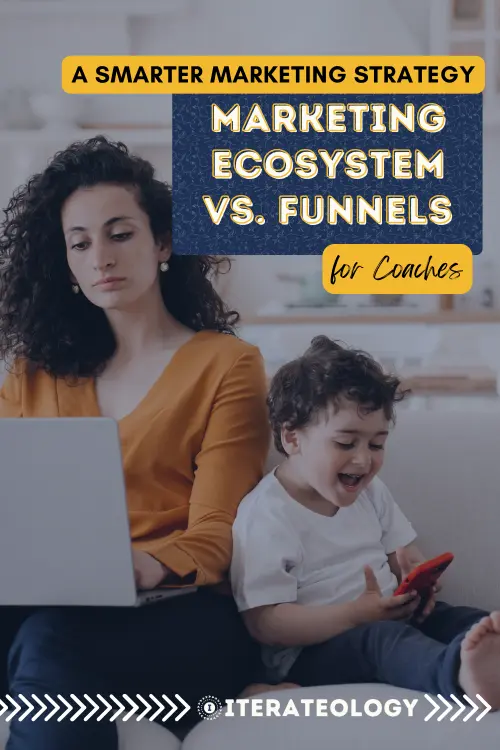
Other Posts in this series:
- Marketing Measurement Terms: A Guide for Coaches to Track What Really Works
- Lead Generation for Coaches – Why More Traffic Won’t Fix Your Marketing
- Marketing Metrics for Coaches: What to Track for Real Business Growth
- Marketing Ecosystem vs. Funnels: A Smarter Marketing Strategy for Coaches (You Are Here)
- Content Marketing Strategy for Coaches: What Works, Not Just More Content
- Paid Ads Strategy for Coaches: How to Amplify What’s Already Working
- Marketing Strategies that Align with Your Capacity
Are You Tracking the Whole Journey?
Instead of asking, “Where did this sale come from?” try asking, “What path did this client take to get here?”
Funnels focus on single moments.
Ecosystems focus on the full relationship.
When you understand the journey – not just the last click – you can make smarter decisions, strengthen your strategy, and build a business that grows sustainably over time.
If you’re ready to build a marketing system that reflects how your clients actually buy – and gives you the data to optimize along the way – join me inside the Measurable Marketing Ecosystem™ Workshop.
You’ll learn how to map your client journey, score your current system, and create a 90-day optimization plan using my proven 5-part framework.
No more guessing. Just smarter, sustainable marketing that’s measurable from day one.
👉 Get the details for the next live session and reserve your spot here.
Prefer to start with weekly insights and other tools to help you build your own marketing ecosystem? Use the form below to get actionable strategies delivered straight to your inbox.

